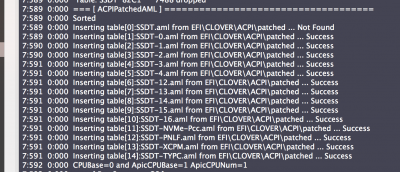If (LAnd (LEqual (TBTS, One), LEqual (TBSE, One)))
{
Scope (_SB.PCI0.RP01.PXSX)
{
Method (_RMV, 0, NotSerialized) // _RMV: Removal Status
{
Return (One)
}
Device (EP02)
{
Name (_ADR, 0x00020000) // _ADR: Address
Device (TXHC)
{
Name (_ADR, Zero) // _ADR: Address
Method (_PRW, 0, NotSerialized) // _PRW: Power Resources for Wake
{
Store (Package (0x02)
{
Zero,
Zero
}, Local0)
Store (0x6D, Index (Local0, Zero))
If (LEqual (USWE, One))
{
Store (0x03, Index (Local0, One))
}
Return (Local0)
}
Device (RHUB)
{
Name (_ADR, Zero) // _ADR: Address
Device (HS01)
{
Name (_ADR, One) // _ADR: Address
Method (_UPC, 0, Serialized) // _UPC: USB Port Capabilities
{
Return (GUPC (0xFF, 0x09))
}
Method (_PLD, 0, Serialized) // _PLD: Physical Location of Device
{
Return (TPLD (One, 0x14))
}
}
Device (HS02)
{
Name (_ADR, 0x02) // _ADR: Address
Method (_UPC, 0, Serialized) // _UPC: USB Port Capabilities
{
Return (GUPC (Zero, 0xFF))
}
Method (_PLD, 0, Serialized) // _PLD: Physical Location of Device
{
Return (TPLD (Zero, 0x15))
}
}
Device (SS01)
{
Name (_ADR, 0x03) // _ADR: Address
Method (_UPC, 0, Serialized) // _UPC: USB Port Capabilities
{
Return (GUPC (0xFF, 0x09))
}
Method (_PLD, 0, Serialized) // _PLD: Physical Location of Device
{
Return (TPLD (One, 0x14))
}
}
Device (SS02)
{
Name (_ADR, 0x04) // _ADR: Address
Method (_UPC, 0, Serialized) // _UPC: USB Port Capabilities
{
Return (GUPC (Zero, 0xFF))
}
Method (_PLD, 0, Serialized) // _PLD: Physical Location of Device
{
Return (TPLD (Zero, 0x15))
}
}
}
}
}
Method (_PS0, 0, Serialized) // _PS0: Power State 0
{
}
Method (_PS3, 0, Serialized) // _PS3: Power State 3
{
Store (" Host router Upstream port _PS3", Debug)
Acquire (OSUM, 0xFFFF)
Store (MMTB (), Local0)
\_GPE.SXST (Local0)
Release (OSUM)
}
}




